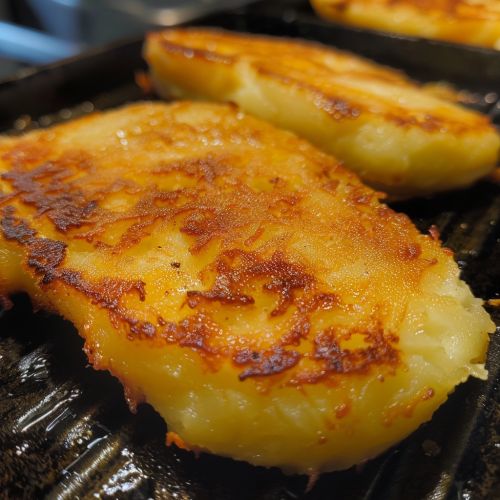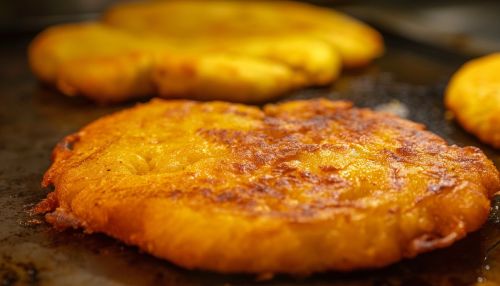Cachapa
Introduction
Cachapa is a traditional Venezuelan dish made from a thick, slightly sweet corn pancake. It is a staple in Venezuelan cuisine and is often enjoyed as a breakfast or snack. The dish is known for its simplicity and rich flavor, derived from fresh corn kernels. Cachapas are typically served with a variety of fillings and toppings, the most common being queso de mano, a type of fresh cheese. This article delves into the history, preparation, variations, and cultural significance of cachapas.
History
The origins of cachapas can be traced back to the indigenous peoples of Venezuela, who cultivated corn as a primary food source. Corn, or maize, has been a fundamental crop in the Americas for thousands of years. The indigenous tribes developed various methods to prepare corn, including grinding it into a paste to make flatbreads and pancakes. Cachapas are believed to have evolved from these early corn-based dishes.
During the colonial period, the recipe for cachapas was influenced by Spanish culinary techniques, leading to the version commonly enjoyed today. The dish has remained a popular and enduring part of Venezuelan culture, often associated with rural areas and traditional cooking methods.
Ingredients and Preparation
The primary ingredient in cachapas is fresh corn, which is ground into a coarse batter. The batter typically includes the following ingredients:
- Fresh corn kernels
- Salt
- Sugar
- Milk or water
- Oil or butter
The preparation process involves the following steps:
1. **Grinding the Corn**: Fresh corn kernels are removed from the cob and ground into a coarse paste using a food processor or traditional grinding methods. 2. **Mixing the Batter**: The ground corn is mixed with salt, sugar, and a small amount of milk or water to achieve the desired consistency. Some recipes also include a bit of oil or melted butter. 3. **Cooking the Cachapas**: The batter is poured onto a hot, greased griddle or skillet, forming a thick pancake. The cachapa is cooked until golden brown on both sides, with a slightly crispy exterior and a soft, moist interior.


Variations
Cachapas can be customized with various fillings and toppings, making them a versatile dish. Some popular variations include:
- **Queso de Mano**: A fresh, soft cheese that melts easily, often used as a filling for cachapas.
- **Ham and Cheese**: A combination of sliced ham and cheese, providing a savory contrast to the sweet corn pancake.
- **Chicken or Beef**: Shredded or grilled chicken or beef, often seasoned with traditional Venezuelan spices.
- **Vegetarian Options**: Grilled vegetables, avocado, and black beans are popular vegetarian fillings.
Cultural Significance
Cachapas hold a special place in Venezuelan culture, often associated with family gatherings and traditional celebrations. They are commonly sold at roadside stands and markets, known as "cachaperas," where they are prepared fresh and served hot. The dish is also a symbol of Venezuelan culinary heritage, representing the fusion of indigenous and colonial influences.
Nutritional Information
Cachapas are a nutritious dish, providing a good source of carbohydrates, fiber, and essential vitamins and minerals from the corn. The nutritional content can vary depending on the fillings and toppings used. For example, adding cheese or meat increases the protein and fat content, while vegetarian options can enhance the fiber and micronutrient profile.
